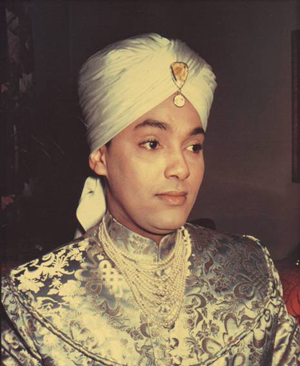Lib at Large: Documentary tells odd story of Korla Pandit, ‘godfather of exotica’Posted in Articles, Arts, Biography, Media Archive, Passing, United States on 2015-11-12 16:07Z by Steven |
Lib at Large: Documentary tells odd story of Korla Pandit, ‘godfather of exotica’
Marin Independent Journal
San Rafael, California
2015-10-29
Marin has been home to some fascinating characters over the decades, but probably no one has been as mysterious and exotic as Korla Pandit, an organ-playing, turban-wearing sex symbol of 1950s daytime TV.
In a 1975 article in the Independent Journal, reporter Ernest Murphy described Pandit as “a puzzle inside an enigma wrapped in a turban.”
While housewives swooned over his doe-eyed gaze on the music show he starred in for KGO-TV in San Francisco, he lived with his wife and two children in the erstwhile Hall McAllister mansion in Kentfield.
He said the 70-year-old house reminded him of his privileged childhood in New Delhi as the son of a Brahmin priest father and a French opera singer mother. The grand old house enhanced his mystique as “the godfather of exotica,” but it was a kind of false front, a facade. He was only renting it temporarily before its owner had it torn down.
Two years after Pandit’s 1998 death in a Petaluma hospital at age 77, journalist R.J. Smith exposed his true identity in a 2001 article in Los Angeles Magazine, “The Many Faces of Korla Pandit.” His fans were shocked to learn that their swami dream boat wasn’t born in New Delhi, far from it. He wasn’t even Indian. He was a light-skinned African American, born in Columbia, Missouri, in a family of seven children. His father was pastor of the largest black church in town and his mother was of Creole heritage. His real name was John Roland Redd. He attended a segregated school in Missouri and showed talent as a pianist and later as an organist…
Read the entire article here.

